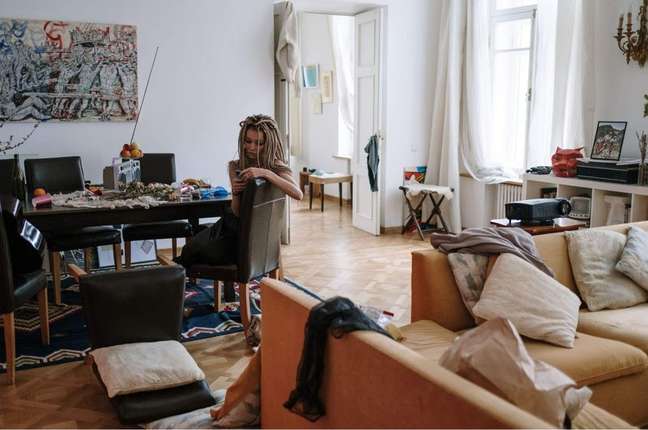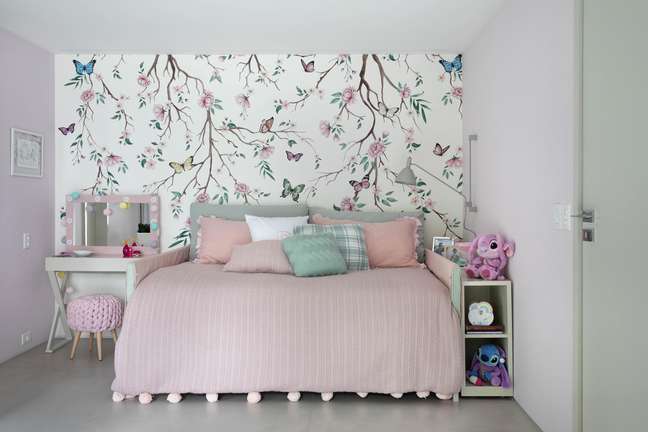The architects emphasize the benefits of neuroarchitecture in designs to help prevent psychological disorders

or September yellow is a national campaign that integrates global actions to prevent suicide, an act which, among other mental and behavioral factors, can be caused by psychological disorders such as anxiety, depression and insomnia. According to the architect and town planner Priscilla Benckeco-founder of the Brazilian Academy of Neuroscience and Architecture (NEUROARQ® Academy), the physical environments in which people live and carry out their core activities can also affect these disorders – including, this is the company’s field of action, specialized in the education and training of professionals and in the dissemination of neuroscience applied to architecture, also known as neuroarchitecture.
“Through neuroscience applied to architecture, we seek to contribute to the creation of healthier environments. These, in turn, can encourage habits and a more positive lifestyle so that people do not have an escalation of the problems related to the disorders. mental and behavioral, “explains Priscilla. Since the environments in which we live affect our physical and mental health, it is necessary to create intelligent projects that increase the quality of life of those who occupy them.
Physical environments x human behavior

“Human beings are driven by relationships and interaction. Both with other people and with the places where we carry out our activities. In this sense, this interaction with their environment, and the space in their entire constitution, will do part of their structuring as a subject, which affect your health in general, “says the neuropsychologist Cinara Soaresprofessor at NEUROARQ® Academy.
For the architect and co-founder of the company, Gabi Sartori, when it comes to the impact of environments on mental health, it is necessary to evaluate the conditions of these spaces in general. According to the specialist, the environment, especially the residential one, is nothing more than the reflection of the people who occupy it. “Depending on the moment in the individual’s life, the thoughts he has and the way he organizes his thoughts and mind, space will reflect who we really are,” he explains. According to Gabi, once people are aware of the impact of environments on their lives, they can use it as a tool for behavioral change.
Priscilla adds that the physical environment, however, cannot solve all the problems and problems of human behavior. “There are infinite variables that define our behavior and the environment is just one of them.”
healthy environments

the Canadian teacher Ty FarrowAccording to him, a specialist in architecture for the healthcare area there is no neutral environment. For him, spaces always positively or negatively affect the people who occupy them. Gabi argues that an important exercise to do is to reflect on how busy places can interfere with mental health. “We should always ask ourselves if they reinforce unhealthy habits,” she notes.
The architect states that the concept expands into the corporate environment, A company’s spaces have the power to interfere with the mental and physical health of employees. “Whether it is the ergonomics they use in their furniture, the correct lighting that can assist the circadian cycle – which is the variation in the biological functions of various living beings, repeated regularly over the course of 24 hours – and also social interaction of these beings. “
For Priscilla, in addition to the actions of mental well-being and psychological support to employees, both of great importance for the present moment, companies should invest in incorporating interventions into their physical structures. “When we talk about the challenges related to the behavioral and mental problems of employees, who are unique and different people, we must think that both psychological prevention actions and interventions in physical environments have their weight and importance”.
Benefits of neuroscience applied to architecture

According to Gabi, “neuroarchitecture” can improve the symptoms of anxiety, depression and insomnia, through points of influence that demonstrate how nature can help with well-being. In addition to nature, neuroscience applied to architecture can use techniques that use shapes, colors and lighting. “The positive influence of natural elements on our sensations and emotions is a subject constantly studied to assist in the treatment of these disorders”, he reiterates. For the specialist, the more architecture professionals study for whom they are designing, with questions like ‘who are these people’, ‘what they suffer from’ and ‘what ailments and symptoms they have’, the more it will be possible to understand what is happening. can do in the environment to help them improve.
“While clients benefit from a project designed to solve their personal and psychological problems, with elements that positively affect their emotions and well-being, the architect will have a more assertive brief. to deliver to that person a project in which he feels part, included and embraced at all times, something significantly important for maintaining mental health “.
Priscilla concludes by explaining that neuroarchitecture can act in a complementary way in the prevention of psychological symptoms. “It is important to have the science that, despite the importance of the physical environment, it is not capable of solving all questions of human behavior. If the individual has symptoms of anxiety, excessive stress or depression, it is important to seek the support of a specialist as soon as possible who will be able to assist in directing them to the best care.“
+The best content in your email for free. Choose your favorite Earth Newsletter. Click here!
Source: Terra
Benjamin Smith is a fashion journalist and author at Gossipify, known for his coverage of the latest fashion trends and industry insights. He writes about clothing, shoes, accessories, and runway shows, providing in-depth analysis and unique perspectives. He’s respected for his ability to spot emerging designers and trends, and for providing practical fashion advice to readers.







